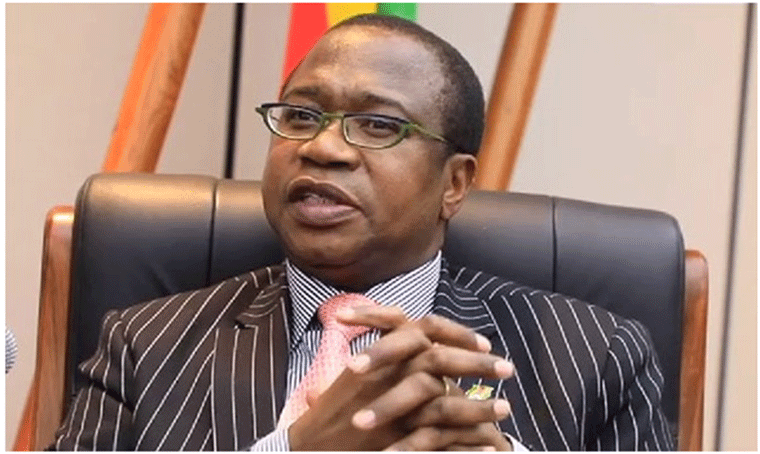
Tafara Mtutu Zimbabwe’s latest parallel market rates (PMRs) have surged to new highs ranging between ZW$620 and ZW$650 to the United States dollar barely four years since the Zimbabwean dollar was resurrected in 2019 by Finance minister Mthuli Ncube. Several drivers have been attributed to the depreciation of the local currency on the parallel market, but corrective measures have only confirmed that the true fundamental drivers are yet to be addressed.
Among the many drivers of parallel market volatility that were expressed by the authorities were (i) the Old Mutual Implied Rate (OMIR), (ii) “cheap” money, (iii) street dealers, and (iv) the Zimbabwe Stock Exchange. The OMIR was deemed a driver of the parallel market in-between 2019 and 2020 as it was purported to inform the market of the level of parallel market rates.
The economic basis of the OMIR was derived from the law of one price which asserts that the one item has the same value even when quoted in different currencies. In this case, Old Mutual Limited’s ZSE listing price was implied to have the same value as its listing on the Johannesburg Stock Exchange and London Stock Exchange, and after making a further assumption of efficient markets, an implied exchange rate was calculated. The correlation between the movements of the OMIR and parallel market was near perfect at 0,97 and we opine that this was a classic manifestation of correlation being mistaken for causality.

We also assert that the implied rates merely proxied for a currency rate whose true value remains controversial. Old Mutual’s listing on the ZSE was suspended from trading on June 26, 2020, and the suspension remains in effect to this date. However, since the counter’s suspension, the PMR has moved from 105 in June 2020 to 620 in June this year.
The idea of “cheap” money driving the PMR took root in 2019 when low interest rates and the depreciation of the local currency created profiteering opportunities for borrowers in Zimdollars. Borrowers would get loans which they would subsequently “burn” and make arbitrage profit.
The credibility of these assertions was watered down by the marginal impact of the interest rates revisions on the rate of depreciation of the Zimdollar on the parallel market. The PMR, which depreciated by 67,4% in the six months leading to the time of the first interest rate hike in August 2019, continued to depreciate at the same rate in the six months at a similar pace of 65,4% after the first hike.
A crackdown on illegal parallel market dealers also failed to contain the depreciation of the local currency. The authorities took to the streets to arrest parallel market dealers who had been fingered to be drivers of the parallel market rate, but the short-term impact of the crackdown indicates that these dealers were merely conduits of the parallel market and not the driver.
More recently, the ZSE was targeted as a source of parallel market volatility, but the decline of the stock market’s value after the recent cocktail of corrective measures amid the parallel market rate’s depreciation from 310 to 620 over the same period points to yet another miss.
- Chamisa under fire over US$120K donation
- Mavhunga puts DeMbare into Chibuku quarterfinals
- Pension funds bet on Cabora Bassa oilfields
- Councils defy govt fire tender directive
Keep Reading
In a bid to legitimise the opinions held by various economic experts, we performed a regression analysis on drivers of the PMR. In this analysis, the growth on Zimdollar money supply amid foreign currency shortages was hypothesised to be a key driver of the depreciation of the PMR.
Monthly data on two independent variables with low correlation — Zimdollar money supply growth and net cross-border payments — were used to quantify the impact of growing supply of local balances amid constrained supply of foreign currency. Data used ranged between January 2019 and December 2021 and it was obtained from the Reserve Bank of Zimbabwe (RBZ).
Monthly observations of the dependent variable (the PMR) were obtained from on market rates from various sources over the same period. Results of the regression revealed that movements in net cross-border payments explained only 0,6% of the movements of the PMR, but the growth in money supply explained 90,2% of the movements in the PMR.
While these results fail to find evidence for the impact of cross-border transactions, it validates the impact of money supply. A deep dive into the components of the country’s money base as provided by the RBZ reveals that growth in money supply between December 2020 and 2021 was largely driven by an increase in reserve deposits.
We also add that there are some factors that are difficult to quantify but merit consideration. These include (i) confidence, (ii) constrained productive capacity, (iii) foreign reserves, and (iv) high debt.
Confidence in the Zimdollar has significantly declined because of volatile policies that have nurtured a distaste for the currency among the locals. The result has been a sustained parallel market and a growing preference to store money outside the banking system.
Local production capacity has been constrained by a difficult operating environment which has seen the few operational businesses depending on ageing and uncompetitive equipment that make local products uncompetitive in comparison to imports. This has also been exacerbated by the porous borders that result in illegal and cheap imports that undercut local products.
The perennial debt burden and low foreign currency reserves also add to a preference for the US dollar over the Zimdollar.
Emerging and frontier economies with a high debt burden and low foreign reserves are often perceived as high-risk investment destinations which deter critical foreign direct investments.
- Mtutu is a research analyst at Morgan & Co. — [email protected] or +263 774 795 854.











